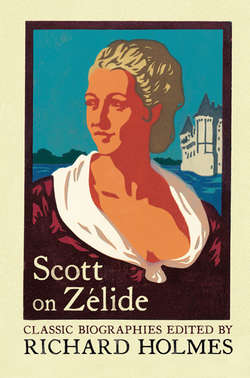Читать книгу Scott on Zélide: Portrait of Zélide by Geoffrey Scott - Richard Holmes - Страница 10
6
ОглавлениеBut did hê Geoffrey Scott’s personal identification with his material was far greater than at first appears. It is partly this that makes the biography so subtly engaging and self-contradictory. Far from producing a coolly objective study of Zélide, the deliberately polished ‘studio portrait’ that he claimed, Scott was writing something perilously close to autobiography. This too makes the biography peculiarly modern in its shifting layers of symbolism and self-reflection.
For the previous decade (and through most of the First World War) Scott had been working as the personal assistant of the celebrated art historian Bernard Berenson, comfortably housed in his vast Florentine Villa, ‘I Tati’. Here Scott cultivated an intense platonic relationship with Berenson’s wife Mary, twenty years his senior, and upon whom he had become emotionally dependent.
Scott – handsome, clever and dilettantish (he had won the Newdigate Prize for poetry at Oxford) could be devastatingly charming. But he was also disorganized, spoilt, selfish and decidedly rakish. In an effort to break away from Mary, he embarked on a number of other affairs, both platonic and otherwise: one with Berenson’s young assistant Nicky Mariano, another with the elderly Edith Wharton in Paris. Then suddenly and unexpectedly in 1918 he married Mary Berenson’s great friend, the aristocratic and neurasthenic Lady Sybil Cutting, who also had a grand house in Florence, the Villa Medici.
The marriage almost immediately ran into difficulties. Ironically, it was only held together (according to Lady Sybil’s daughter, Iris Origo) by their mutual interest in Zélide, discovered that autumn of 1919 on the shores of Lake Geneva, where Scott had taken Lady Sybil on a rest cure. Iris Origo later wrote in her memoirs: ‘Thus by a curious irony, a woman [Zélide] whose own emotional life had been singularly unhappy, brought for a few months, harmony to another woman’s marriage. In the absorption of bringing Zélide and Boswell, d’Hermenches and Constant, to life again, Geoffrey and his wife suspended the relentless analysis of their own feelings; they laughed and worked together. Perhaps, too, there was in all this a certain process of self-identification’ (Images and Shadows)
After the initial excitement of discovery, Scott’s work on the biography which he had intended to finish in a year, slowed down. Like Philippe Godet, he underwent the classic ‘transfer experience’ of the modern biographer, starting as the detached scholar but gradually being drawn hypnotically into all the domestic details and dramas of Zélide’s world. The historical story becoming more and more a weird reflection of his own life, and emotional entanglements.
In 1922 Geoffrey Scott wrote to Nicky Mariano: ‘The thing that makes me stick in the mud with that book, is that [Zélide’s] relations with Benjamin Constant, after his marriage, have an uncanny likeness to Mary [Berenson’s] feelings and actions four years ago. I understand it almost too well to write about it in the detached and light manner which the tone of the book requires…The idea of Mary’s reading the manuscript and drawing the inevitable parallels at each point embarrasses me a good deal in writing it.’
When not working on Zélide, Scott drifted away from Lady Sybil and his marriage. He spent the summer of 1923in England and embarked on a refreshing new affair, this time with Harold Nicolson’s wife, the aristocratic novelist Vita Sackville-West. Vita was another powerful literary woman with a country estate, the beautiful manor house of Long Barn in Kent (near her ancestral home of Knole). As an established writer she too encouraged Scott with his work on Zélide. He could confide in her without ceremony, and revealed his increasingly intense involvement with Zélide’s story.
‘I’m going to busy myself this week with Madame de Charrière,’ he wrote to Vita in October 1923. ‘I’ve dragged her by the scruff of the neck round two or three difficult corners. I’ve done the meeting with Benjamin and the first fantastic part of their friendship: it’s good that part, I hope, and goes with a swing. I give it mostly through Monsieur de Charrière’s eyes, bewildered and misunderstanding, watching rather breathlessly the spectacle of Zélide coming back to life. I’ve got Mme de Staël in the wings just ready to pop in…with her private theatricals, negroid beauty, her tramping insensibility and impeccable bad taste.’
He emphasized the daring speed he had set himself in the narrative. ‘I’ve struck a very quick tempo, and can’t afford now to slow it: the book will be quite shockingly short.’ But above all Scott stressed his own personal excitement with the work, and the way he was now inspired by Vita. ‘It’s fun, though, doing it. I do it for you.’
So the tangled web of Geoffrey Scott’s relationships (not in fact unduly tangled by the standards of post-War Bloomsbury), each generated an extensive correspondence about the biography, and curiously mimicked different aspects of Zélide’s own story. Indeed Mary Berenson, Edith Wharton, Lady Sybil, and Vita Sackville-West were each separately told by Scott that Zélide’s biography was secretly and lovingly dedicated to them alone, and contained their disguised portraits as Zélide.
Similarly, it was to be understood that Scott himself was sometimes the mercurial Constant, sometimes the worldly Chevalier d’Hermenches, and sometimes (though rarely) the long-suffering and inadequate M. de Charrière. On the other hand, he was never James Boswell. Mostly he identified with Benjamin Constant, writing to Mary Berenson that drawing Constant’s portrait gave him the most trouble: ‘he is so many sided, so inexhaustible, it is difficult to bring him out fully within the compass of my small scale.’
